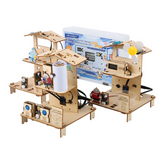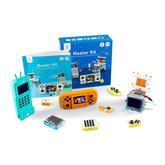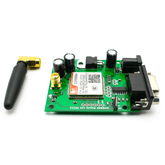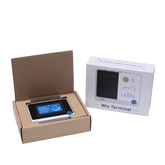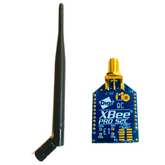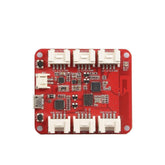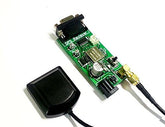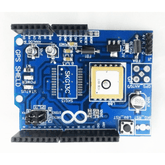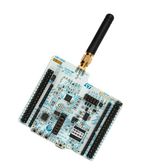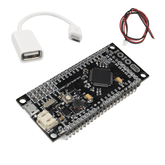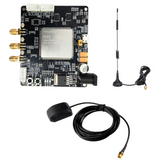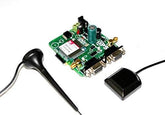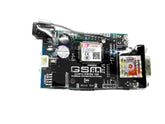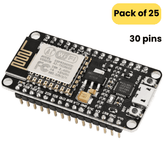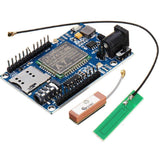-
SIM800A LM317 with Antenna(GSM Finger)- ADIYSIM800A LM317 with Antenna(GSM Finger)- ADIY The SIM800A Quad-Band GSM/GPRS Module with RS232 Interface is a comprehensive solution for Quad-band GSM/GPRS communication. It comes in an LGA (Land grid array) form factor and offers low power consumption while enabling voice, SMS, and data transmission....
- Rs. 853
Rs. 1,149- Rs. 853
- Unit price
- per
Save Rs. 296 -
SIM900A GSM-GPRS USB SMS Modem - Industrial GradeSIM900A GSM/GPRS USB SMS Modem Sim900a GSM/GPRS USB Modem, Featuring an industry-standard interface, the SIM900A delivers GSM/GPRS 900/1800MHz performance for SMS, Data, and Fax in a small form factor and with low power consumption, With Aluminum enclosure to minimize noise. Best suitable for SMS...
- Rs. 1,566
Rs. 1,895- Rs. 1,566
- Unit price
- per
Save Rs. 329 -
Wio Terminal Development Board ATSAMD51 Core with Realtek RTL8720DNWio Terminal Development Board ATSAMD51 Core with Realtek RTL8720DN Wio Terminal is an ATSAMD51-based microcontroller with wireless connectivity supported by Realtek RTL8720DN. Its CPU speed runs at 120MHz (Boost up to 200MHz). Realtek RTL8720DN chip supports both Bluetooth and Wi-Fi providing the backbone for IoT projects. Wio Terminal is more...
- Rs. 4,099
Rs. 4,320- Rs. 4,099
- Unit price
- per
Save Rs. 221 -
ESP14 ESP8266 Serial Wireless Transceiver WiFi Module AP+STAESP14 ESP8266 Serial Wireless Transceiver WiFi Module AP+STA The ESP-14 WiFi Module Combines ESP8266 with STM8S MCU with 802.11b/g/n and can be widely used in smart home and the Internet of Things, for the user's connected devices to the Wi-Fi wireless network. The module...
- Rs. 203
Rs. 332- Rs. 203
- Unit price
- per
Save Rs. 129 -
Zigbee XBee Pro S2C 802.15.4 Module 63mW 3Km+ 3.2dBi AntennaZigbee XBee Pro S2C 802.15.4 Module 63mW 3Km+ 3.2dBi Antenna Zigbee XBee Pro S2C 802.15.4 Module is the perfect solution for long-range communication and home automation. This Zigbee XBee module boasts a 3Km+ range, making it ideal for various applications. It supports binding and multicasting,...
- Rs. 2,312
Rs. 2,999- Rs. 2,312
- Unit price
- per
Save Rs. 687 -
Sim808 GSM-GPRS ModuleSim808 GSM/GPRS Module The SIM808 Bluetooth Compatible GSM/GPRS/GPS Development Board is designed for Arduino and Raspberry Pi compatibility. It incorporates the SIM808 module, enabling GSM communication and GPS functionality. With this board, you can easily send and receive SMS, track locations, and even create...
- Rs. 1,841
Rs. 2,128- Rs. 1,841
- Unit price
- per
Save Rs. 287 -
Seeed Studio Wio Link Wireless Development BoardSeeed Studio Wio Link Wireless Development Board Wio Link is designed to simplify your IoT development. It is an ESP8266-based open-source Wi-Fi development board to create IoT applications by virtualizing plug-and-play modules to RESTful APIs with mobile APPs. This time, we define a new...
- Rs. 736
Rs. 1,399- Rs. 736
- Unit price
- per
Save Rs. 663 -
SKG13 GPS ModuleSKG13 GPS Module The SKG13C GPS Receiver with External Active Antenna is a user-friendly device compatible with both PCs and MCUs. It belongs to the Skylab SKG13 series, which offers a complete GPS receiver module with outstanding sensitivity, minimal power consumption, and a compact...
- Rs. 1,349
Rs. 1,440- Rs. 1,349
- Unit price
- per
Save Rs. 91 -
L80 GPS ShieldL80 GPS Shield The shield features new generation GlobalTop GPS chipset and SIM800 Quad-band GSM/GPRS engine that works on 850/ 900/ 1800/ 1900 MHz. With GPS technology the shield supports satellite navigation along with cellular connectivity and that makes most of what you need for...
- Rs. 1,007
Rs. 1,548- Rs. 1,007
- Unit price
- per
Save Rs. 541 -
125Khz RFID Reader TTL Module125Khz RFID Reader TTL Module The 125Khz Proximity RFID Reader Module has an inbuilt antenna in minimized form factor. designed to work on the industry-standard carrier frequency of 125 kHz. The sensitivity range is about 6cm from the antenna coil. The antenna on the PCB. Buzzer...
- Rs. 400
Rs. 603- Rs. 400
- Unit price
- per
Save Rs. 203 -
STMicroelectronics NUCLEO-WL55JC1STMicroelectronics NUCLEO-WL55JC1 The STMicroelectronics NUCLEO-WL55JC1 will help you embrace the electronics of the future. With the help of this board, you may investigate complex microcontroller projects in an easy and affordable way. Numerous applications are supported by this board, such as Sigfox, LoRaWAN, wM-Bus,...
- Rs. 6,649
Rs. 8,499- Rs. 6,649
- Unit price
- per
Save Rs. 1,850 -
IOIO-OTG for Android with USB OTG CableIOIO-OTG for Android with USB OTG Cable The IOIO-OTG board facilitates easy and rapid connection of electronic circuits to a PC or an Android device. You can connect the IOIO-OTG to the Android/PC via USB or Bluetooth, and power it (not mandatory if used...
- Rs. 1,104
Rs. 1,499- Rs. 1,104
- Unit price
- per
Save Rs. 395 -
13.56MHz USB RFID Reader-Writer with Card & Keychain13.56MHz USB RFID Reader/Writer with Card & Keychain This is a 13.56MHz USB RFID Reader-Writer with Card & Keychain. WRITING DATA ON THE CARD/KEYCHAIN: Start with $ symbol and type the data in the HyperTerminal to be written in the Card/Keychain, it can store...
- Rs. 1,370
Rs. 1,583- Rs. 1,370
- Unit price
- per
Save Rs. 213 -
N58 Bluetooth Evaluation Board with GPS GNSS & LTE AntennasN58 Bluetooth Evaluation Board with GPS GNSS & LTE Antennas Looking to upgrade your tech projects? Check out our N58 Bluetooth Evaluation Board with GPS GNSS & LTE Antennas combo! The N58 Bluetooth Evaluation Board is perfect for all kinds of IoT and industrial...
- Rs. 3,657
Rs. 5,299- Rs. 3,657
- Unit price
- per
Save Rs. 1,642 -
SIM908 GSM-GPRS-GPS ModemSIM908 GSM-GPRS-GPS Modem SIM908 module is a complete Quad-Band GSM/GPRS module that combines GPS technology for satellite navigation. The compact design which integrated GPRS and GPS in an SMT package will significantly save both time and costs for customers to develop GPS-enabled applications. Featuring...
- Rs. 2,608
Rs. 3,368- Rs. 2,608
- Unit price
- per
Save Rs. 760 -
SIM800 UART TTL GSM Modem Module With SMA AntennaSIM800 UART TTL GSM Modem Module With SMA Antenna SIM800 is a quad-band GSM/GPRS module that works on frequencies GSM 850MHz, EGSM 900MHz, DCS 1800MHz and PCS 1900MHz. SIM800 features GPRS multi-slot class 12/ class 10 (optional) and supports the GPRS coding schemes CS-1,...
- Rs. 1,420
Rs. 1,533- Rs. 1,420
- Unit price
- per
Save Rs. 113 -
SIM800C GSM ModemSIM800C GSM Modem The SIM800C GSM Modem is a quad-band GSM/GPRS module that supports up to 85.6kbps of GPRS data transfer. It has a powerful expansion capability and a rich set of interfaces, including UART, USB2.0, and GPIO. The module provides customers with great...
- Rs. 1,166
Rs. 1,396- Rs. 1,166
- Unit price
- per
Save Rs. 230 -
ESP32 (38 Pin) WiFi + Bluetooth NodeMCU-32 Development Board ( Pack of 25)ESP32 (38 Pin) WiFi + Bluetooth NodeMCU-32 Development Board This is an ESP32 development board. It features WiFi+Bluetooth connectivity onboard and keys. ESP 32 Development board is based on the ESP WROOM32 WIFI + BLE Module. It’s a low-footprint, minimal system development board powered by the...
- Rs. 10,499
Rs. 13,050- Rs. 10,499
- Unit price
- per
Save Rs. 2,551 -
NodeMCU ESP8266 (AMICA-CP2102 driver) (Pack of 25)NodeMCU ESP8266 (AMICA-CP2102 driver) The Amica Node MCU development board is based on ESP8266 and is integrated with an onboard CP2102 USB-TTL converter. The Node MCU is an open-source firmware and development platform that helps you to prototype your IOT projects and bring them to life....
- Rs. 6,965
Rs. 8,225- Rs. 6,965
- Unit price
- per
Save Rs. 1,260 -
Wireless Module A7 GSM GPRS GPSWireless Module A7 GSM GPRS GPS This is a development board for serial GSM/GPS functionality, based on AI-Thinker's A7 module. It is designed to support dual-band GSM/GPRS networks, enabling remote transmission of GPRS and SMS message data.The A7 module is equipped with GSM/GPRS/GPS features,...
- Rs. 1,701
Rs. 2,163- Rs. 1,701
- Unit price
- per
Save Rs. 462

Best Price Guarantee

Ready Stock for Bulk Purchase

Dedicated Account Managers
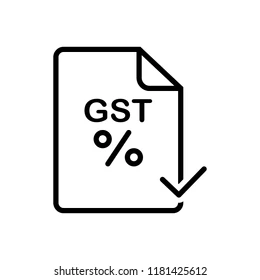
5% GST Benefits for Eligible SEZ and Edu

Technical Support Available

1-Year Manufacturer Warranty



